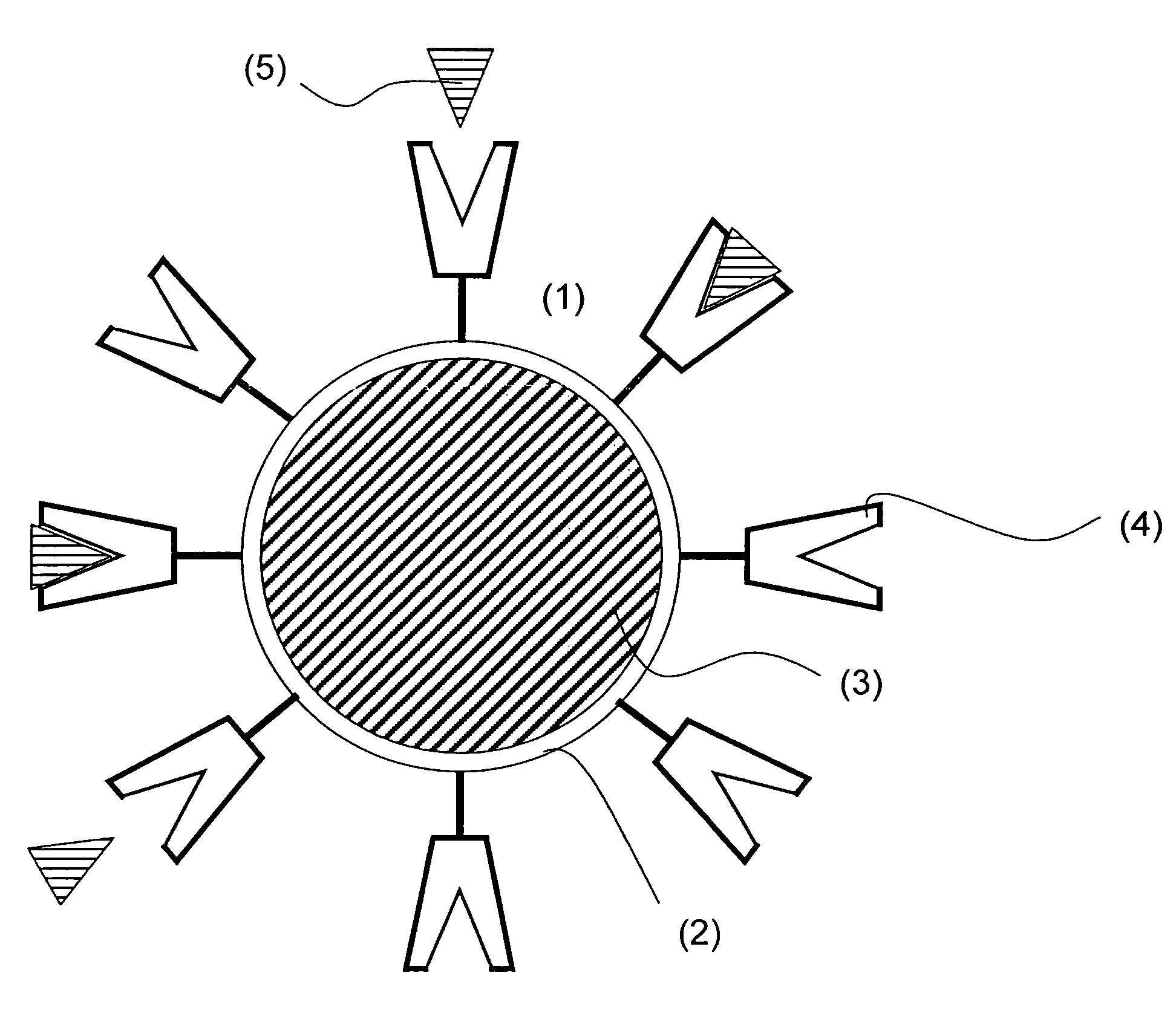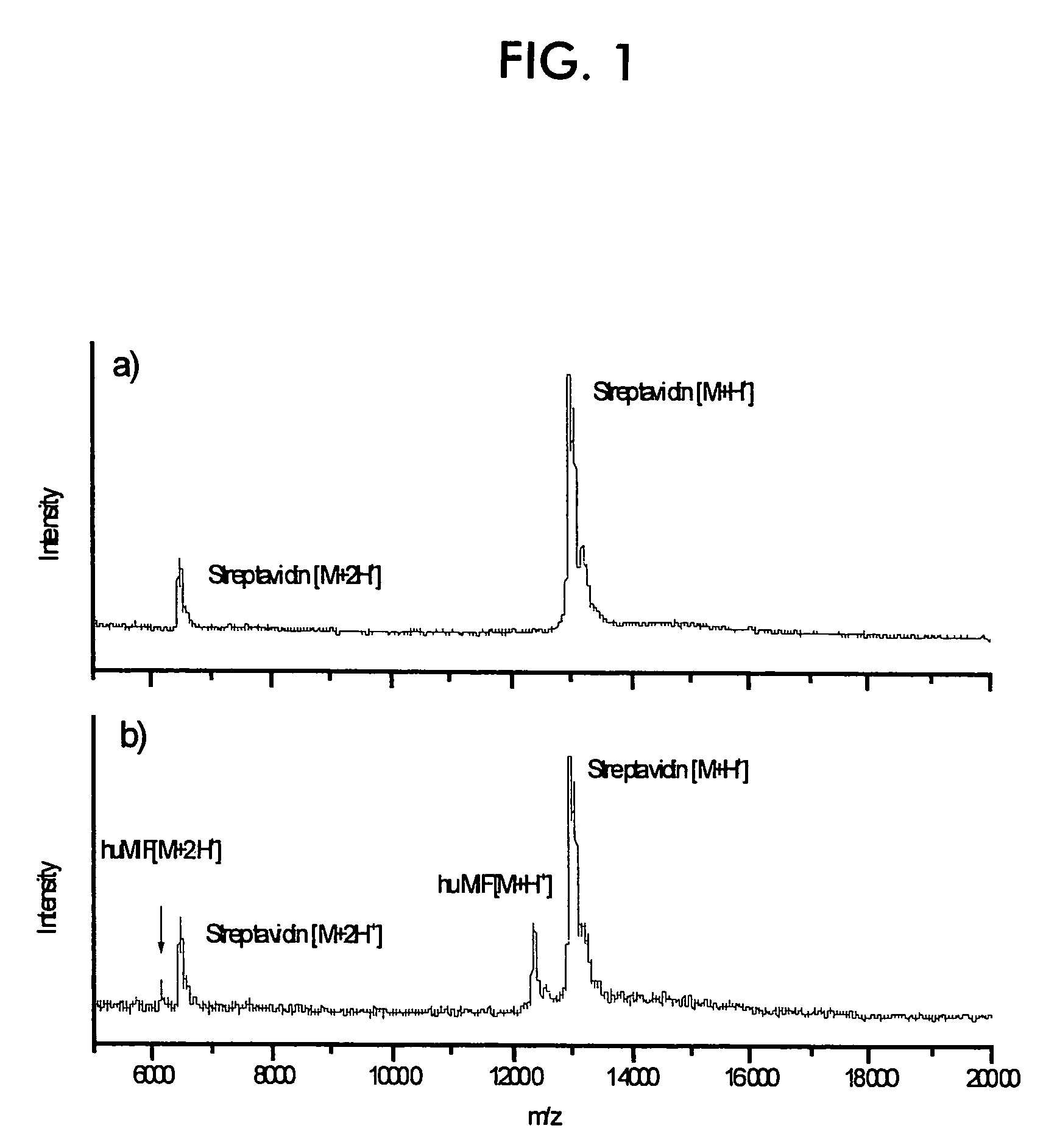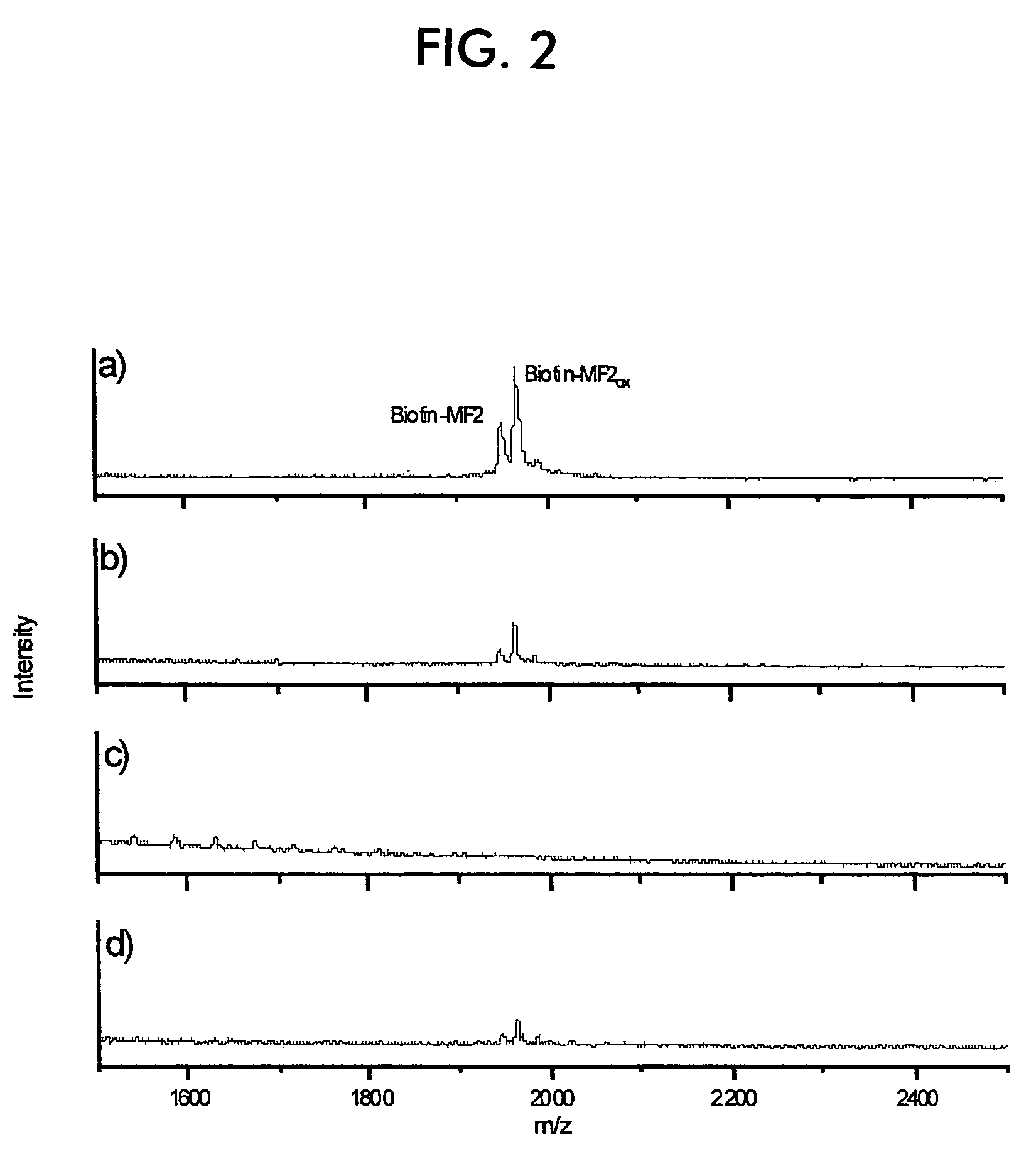Mass spectrometric analysis using nanoparticles
- Summary
- Abstract
- Description
- Claims
- Application Information
AI Technical Summary
Benefits of technology
Problems solved by technology
Method used
Image
Examples
example 1
Preparation of Nanoparticulate Cores
Silica Carrier
[0076]12 mmol of tetraethoxysilane and 90 mmol of NH3 were added to 200 ml of ethanol. The mixture was stirred at room temperature for 24 hours and then the particles which had formed were purified by multiple centrifugation. This resulted in 650 mg of silica particles with an average particle size of 125 nm.
example 2
Surface Modification of the Cores
2.1 Amino-Functionalized Surface
[0077]A 1% by weight aqueous suspension of the cores obtained in example 1 was mixed with 10% by volume of 25% ammonia. 20% by weight of aminopropyltriethoxysilane, based on the cores, were added and the mixture was stirred at room temperature for one hour. The particles were purified by multiple centrifugation. The resulting particles have functional amino groups on their surface (zeta potential in 0.1 M acetate buffer: +35 mV).
2.2 Pegylated Surface
[0078]1 mg of amino-functionalized particles (example: 2.1) are suspended in 1 ml of 10 mM phosphate buffer (pH: 7.0). Subsequently, up to 1 mg of heterofunctional polyethylene glycols such as mPEG-succinimidyl propionate, t-Boc-NH-PEG-succinimidyl propionate, maleimido-PEG-succinimidyl propionate or mixtures thereof are added, and the mixture is shaken at room temperature for 3 hours. If protective groups are present on the surface they are removed by treatment with 1% tri...
example 3
MALDI
[0090]Immobilization and direct MALDI MS detection of huMIF on streptavidin-conjugated silica nanoparticles.
[0091]FIG. 1a) shows a mass spectrum of nanoparticles without immobilization of proteins. The spectrum shows only peaks of the streptavidin monomer. FIG. 1b) shows a mass spectrum of nanoparticles after they have been put into a solution of huMIF and biotinylated anti-huMIF antibody and then washed several times with buffer solutions. Unambiguous signals of huMIF are obtained. This means that huMIF was specifically bound to the nanoparticles and can be detected directly thereon.
[0092]Example of the concentration of nanoparticles on MALDI sample carriers.
[0093]FIG. 2 demonstrates the concentration of silica nanoparticles on MALDI sample carriers. FIGS. 2(a)–(c) show mass spectra of (a) 50 pmol, (b) 5.0 pmol, and (c) 0.50 pmol of biotinylated MF2 immobilized on in each case 25 μg of silica nanoparticles. (a) and (b) show peaks with diminishing intensity corresponding to the...
PUM
 Login to View More
Login to View More Abstract
Description
Claims
Application Information
 Login to View More
Login to View More - R&D Engineer
- R&D Manager
- IP Professional
- Industry Leading Data Capabilities
- Powerful AI technology
- Patent DNA Extraction
Browse by: Latest US Patents, China's latest patents, Technical Efficacy Thesaurus, Application Domain, Technology Topic, Popular Technical Reports.
© 2024 PatSnap. All rights reserved.Legal|Privacy policy|Modern Slavery Act Transparency Statement|Sitemap|About US| Contact US: help@patsnap.com










